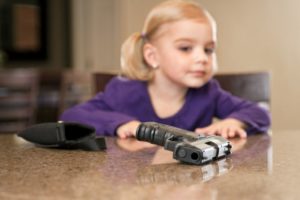 It is a sad fact that schools are no longer as safe as they should be. There has been a drastic increase in bullying and as it increases, so to have instances of gun violence within the schools. This has lead to a huge debate about how to decrease the risk to our children and increase the gun safety in schools. Do you have an opinion as most all other people do?
It is a sad fact that schools are no longer as safe as they should be. There has been a drastic increase in bullying and as it increases, so to have instances of gun violence within the schools. This has lead to a huge debate about how to decrease the risk to our children and increase the gun safety in schools. Do you have an opinion as most all other people do?
The Debate Takes Place
 Gun safety is something that we once associated with inside the home. Our focus was keeping guns locked away so that children wouldn’t have easy access to them. Now, because of the increase of school violence taking place, we are faced with a different kind of debate. Should teachers carry weapons to protect themselves and their students in the classroom? Is this enough to keep us safe or is there still something else that we could do to protect our children when they leave us each day? It is something that everyone is talking about and many people say that instead of giving teachers the right to carry guns, we should further restrict the availability of them.
Gun safety is something that we once associated with inside the home. Our focus was keeping guns locked away so that children wouldn’t have easy access to them. Now, because of the increase of school violence taking place, we are faced with a different kind of debate. Should teachers carry weapons to protect themselves and their students in the classroom? Is this enough to keep us safe or is there still something else that we could do to protect our children when they leave us each day? It is something that everyone is talking about and many people say that instead of giving teachers the right to carry guns, we should further restrict the availability of them.
Giving Teachers Protection
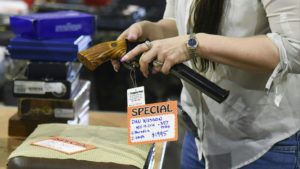 Teachers are caregivers to our children for at least 180 days of the year. Their job is to teach our children and protect them from dangers. They are able to diagnose when a child does not feel well enough to be at school and can send them to the school nurse for issues that they may be having that day. They are also there with the children when violence breaks out. They have the ability to be in that classroom when someone walks in and starts firing random shots around the classroom. They can easily do it thanks to the fact that they can find the best rifle scope under 100 listed here: http://longrangescopes.org/best-cheap-scope-under-100/. They may also be able to help out other classrooms who need it if something happens and the teacher is unable to protect the children.
Teachers are caregivers to our children for at least 180 days of the year. Their job is to teach our children and protect them from dangers. They are able to diagnose when a child does not feel well enough to be at school and can send them to the school nurse for issues that they may be having that day. They are also there with the children when violence breaks out. They have the ability to be in that classroom when someone walks in and starts firing random shots around the classroom. They can easily do it thanks to the fact that they can find the best rifle scope under 100 listed here: http://longrangescopes.org/best-cheap-scope-under-100/. They may also be able to help out other classrooms who need it if something happens and the teacher is unable to protect the children.
Other, Safer Ways of Handling Gun Violence
There are numerous people who say that teachers and guns do not belong together. There are even people who point out that teachers carrying guns may increase the risk of gun violence in the schools. They would prefer to see fewer guns near the schools. They want to see an increase in school security. Security guards checking for weapons and more are all potential ideas. It is true, these things can help keep kids safe, but there is a risk of not all bad people being kept at bay and not all weapons being discovered before they walk through the school gates. Perhaps instead of a single option being the right one, we should figure out a way to combine all possible solutions to create one perfect plan. For instance, teachers may have access to a gun that is securely locked in a desk drawer and they should undergo therapy to ensure that having a gun in their hands is not risky, but there should also be security guards patrolling in and around the schools constantly. What do you think we should do?
 One of the hardest lessons that a child will learn is to balance. It is something that many of them do not achieve learning well enough to sit on their own for the first several months of their lives. Then it takes more practice for them to learn how to stand on two feet and eventually take those first few wobbly steps. It is even more challenging if you want your child to participate in sports or gymnastics where they must have a full understanding of balance. You can help them to learn by teaching kids balance in a fun way.
One of the hardest lessons that a child will learn is to balance. It is something that many of them do not achieve learning well enough to sit on their own for the first several months of their lives. Then it takes more practice for them to learn how to stand on two feet and eventually take those first few wobbly steps. It is even more challenging if you want your child to participate in sports or gymnastics where they must have a full understanding of balance. You can help them to learn by teaching kids balance in a fun way.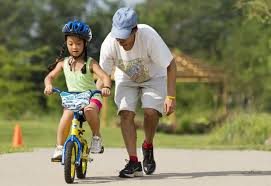 Balance is something that is required for our bodies to move around. It is important for that toddler learning to walk and it is important for adults who have things to do. Without a good sense of balance, you wouldn’t be able to stand up, walk forward, or climb steps. You wouldn’t even be able to sit upright without it. It is also something that we must continue to use or as we age, we may lose the ability to keep our balance.
Balance is something that is required for our bodies to move around. It is important for that toddler learning to walk and it is important for adults who have things to do. Without a good sense of balance, you wouldn’t be able to stand up, walk forward, or climb steps. You wouldn’t even be able to sit upright without it. It is also something that we must continue to use or as we age, we may lose the ability to keep our balance.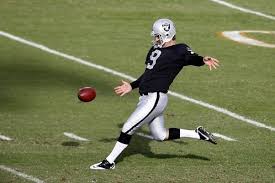 W
W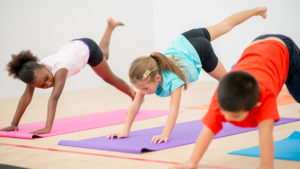 When teaching your children to be better balanced and encourage them to constantly improve it, keeping it fun will be very important. There are some very fun techniques that you can use with your kids to teach them balance and about their center of gravity. One idea is a pillow path. You can encourage your child to walk across pillows that are laid out around your home. Some may be close together and others may be further apart. They may also be different shapes and sizes. Each step will be a challenge to your child, but it will be fun enough to keep them entertained for quite a while. Hopscotch is also a great way to teach balance since kids have to jump using one leg at times. The box balance game is a game that is similar to Twister, but instead of circles on a floor, your child will put their feet or hands into different colored boxes that have been taped together. As your child progresses in their abilities, you can upgrade from a garden hose “tightrope” to something that is higher off the ground or even purchase an electric standing scooter from
When teaching your children to be better balanced and encourage them to constantly improve it, keeping it fun will be very important. There are some very fun techniques that you can use with your kids to teach them balance and about their center of gravity. One idea is a pillow path. You can encourage your child to walk across pillows that are laid out around your home. Some may be close together and others may be further apart. They may also be different shapes and sizes. Each step will be a challenge to your child, but it will be fun enough to keep them entertained for quite a while. Hopscotch is also a great way to teach balance since kids have to jump using one leg at times. The box balance game is a game that is similar to Twister, but instead of circles on a floor, your child will put their feet or hands into different colored boxes that have been taped together. As your child progresses in their abilities, you can upgrade from a garden hose “tightrope” to something that is higher off the ground or even purchase an electric standing scooter from  Kids learn best by touching and having hands on experiences. However, when learning about electricity, there are not many “safe” activities that they can learn from. The exception to this rule is the very popular elementary and middle school experience of “
Kids learn best by touching and having hands on experiences. However, when learning about electricity, there are not many “safe” activities that they can learn from. The exception to this rule is the very popular elementary and middle school experience of “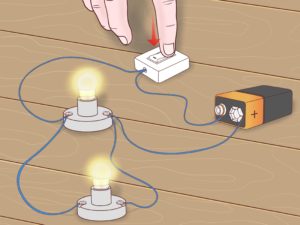 Electricity is something that is always fun to learn about, especially since teachers can go in a lot of different directions with their teachings. They are able to cover watts, volts, amps, and loads first and then move into discussing circuits and how the wires make it possible for electricity to flow from the battery and into the light. They can discuss metal and how it is often another way for electricity to travel. The lessons have to be easily understood by kids in that grade level, but as they learn or become more interested; it can go into even more aspects of electricity.
Electricity is something that is always fun to learn about, especially since teachers can go in a lot of different directions with their teachings. They are able to cover watts, volts, amps, and loads first and then move into discussing circuits and how the wires make it possible for electricity to flow from the battery and into the light. They can discuss metal and how it is often another way for electricity to travel. The lessons have to be easily understood by kids in that grade level, but as they learn or become more interested; it can go into even more aspects of electricity.
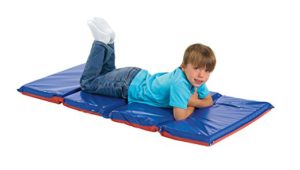 When kids go to school, parents often worry that they will not be comfortable enough, especially those parents who are enrolling preschoolers into their first school. Nap times are often the most uncomfortable times because, in the past, kids have been required to lay on thin mats that are scattered around randomly. Isn’t it good to know that comfort in kindergarten and nursery school are both improving?
When kids go to school, parents often worry that they will not be comfortable enough, especially those parents who are enrolling preschoolers into their first school. Nap times are often the most uncomfortable times because, in the past, kids have been required to lay on thin mats that are scattered around randomly. Isn’t it good to know that comfort in kindergarten and nursery school are both improving?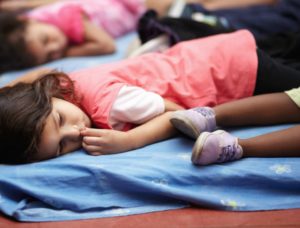 Children who are well rested are more able to learn. They are less cranky. They are better behaved. The list may go on and on. There are just so many benefits to having well rested children who get enough sleep each night and during the day. There are also a few cons as well. Often, kids lay down but they are unable to get comfortable enough for a short nap when they are at school. This can make them even more cranky and it can make it so that they do not learn as well as they would under normal circumstances. It can make them feel groggier instead of better. It can mean that the teacher does not get a break that they want and it may make them feel cranky themselves.
Children who are well rested are more able to learn. They are less cranky. They are better behaved. The list may go on and on. There are just so many benefits to having well rested children who get enough sleep each night and during the day. There are also a few cons as well. Often, kids lay down but they are unable to get comfortable enough for a short nap when they are at school. This can make them even more cranky and it can make it so that they do not learn as well as they would under normal circumstances. It can make them feel groggier instead of better. It can mean that the teacher does not get a break that they want and it may make them feel cranky themselves. Parents spend a lot of time worrying about a lot of things. How comfortable kids are when they are at school, should not have to be one of them. Taking care of kids at home is easy compared to what teachers have to deal with when they have a class full. Take a break and feel confident that teachers have it under control. They have everything that they need to ensure that your kids are safe and now they are also making them very comfortable. They can get one of the two recommended naps that they should have each day. This will ensure that they do not fall asleep on the bus on the way home and it will ensure that when they get home, you will have no issues trying to get them to talk about their day, show you what they learned, and more. What more could you hope for?
Parents spend a lot of time worrying about a lot of things. How comfortable kids are when they are at school, should not have to be one of them. Taking care of kids at home is easy compared to what teachers have to deal with when they have a class full. Take a break and feel confident that teachers have it under control. They have everything that they need to ensure that your kids are safe and now they are also making them very comfortable. They can get one of the two recommended naps that they should have each day. This will ensure that they do not fall asleep on the bus on the way home and it will ensure that when they get home, you will have no issues trying to get them to talk about their day, show you what they learned, and more. What more could you hope for? Children love to learn and they have a more successful learning experience when they can take a “
Children love to learn and they have a more successful learning experience when they can take a “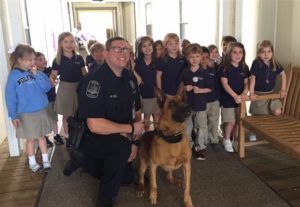 The learning experience that can be gained from a field trip is unimaginable. Most all destinations can teach a child science, art, language, math, and other subjects. The educational value will depend on where you are going on the field trip. For instance, if you take a trip to a butterfly garden, you will learn about
The learning experience that can be gained from a field trip is unimaginable. Most all destinations can teach a child science, art, language, math, and other subjects. The educational value will depend on where you are going on the field trip. For instance, if you take a trip to a butterfly garden, you will learn about 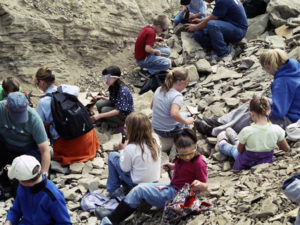 As a parent, you can take advantage of many of the same field trips, even without the school. It can still be a great learning experience for your child. Even if you cannot venture to field trip destinations, the ultimate field trip may be a trip to a local river where you talk to your child about the fish, rocks, tide changes, or anything else that applies to that river, or that area. You could even talk about the Indians that used to call that area home and how they traveled on canoes through that river if it applies to that area. With a little creativity,
As a parent, you can take advantage of many of the same field trips, even without the school. It can still be a great learning experience for your child. Even if you cannot venture to field trip destinations, the ultimate field trip may be a trip to a local river where you talk to your child about the fish, rocks, tide changes, or anything else that applies to that river, or that area. You could even talk about the Indians that used to call that area home and how they traveled on canoes through that river if it applies to that area. With a little creativity,